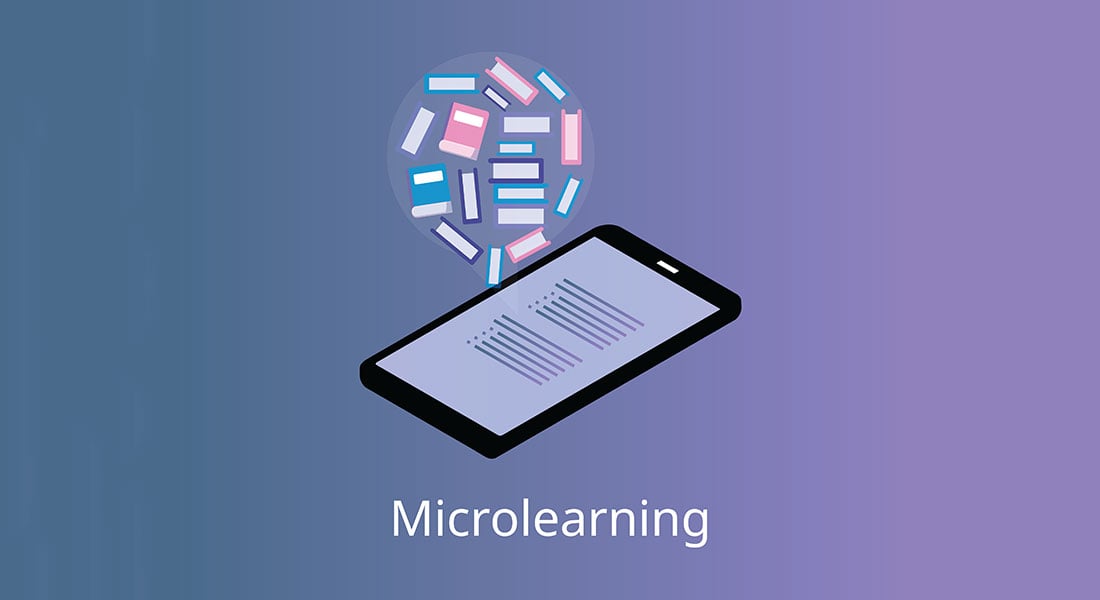5 Benefits of Microlearning Organizations Can’t Ignore
What will the benefits of microlearning be for your organization? This blog will explore some of the benefits of microlearning to corporate training.

Microlearning is the option organizations turn to when they are looking at providing information to their employees when they need it and helping them perform their jobs better. Microlearning, as we know is short learning bytes that make it effective for transferring knowledge and retention. Microlearning modules are available anytime and anywhere. They can either be standalone courses or part of curriculum courses. They can supplement a formal learning strategy; either way, they have proved to be useful and capable of delivering learning to employees. While all this is true, what are the benefits of microlearning to organizations?
5 Benefits of Microlearning for Organizations
- Speeds up time to proficiency
- Sustains and enhances employee performance
- Decreases development, delivery time and costs
- Content can be updated, reused and repurposed
- Makes training easy
For organizations, microlearning helps meet productivity goals through a training method that is easy to create and appeals to learners as well. It keeps employees updated on the latest skills and knowledge. Let us look at a few significant benefits microlearning offers organizations:
Benefits of Microlearning to Organizations
1. Microlearning Speeds Up Time to Proficiency
Microlearning is an efficient way to make employees quickly proficient in their jobs. These learning nuggets are delivered to employees whenever and wherever they need them and provide easy accessibility at the point of need. This just-in-time support helps them perform their jobs better.
The benefit of microlearning is that these learning bites also provide the crucial reinforcement of what they have learned. This periodic reinforcement and instant accessibility help employees perform their tasks faster and more importantly, in a proficient way. Since knowledge is delivered inside the workflow with microlearning, the time to proficiency is shorter.
2. Sustains and Enhances Employee Performance
While microlearning helps improve proficiency, it also helps enhance performance, thanks to the interesting formats they are available in. The reinforcement and just-in-time support is a benefit of microlearning and helps learners hone their skills. Employees too will appreciate the fact that management is making an effort to help them in their performance and will respond positively to a microlearning initiative and make an effort to hone their skills.
3. Microlearning Decreases Development, Delivery Time and Costs
Microlearning is easy to design, develop, and deliver. Since they are of short duration, there is no need for complex animations or graphics, which means faster turnaround times and development at reduced cost. They are easy to maintain and support a variety of purposes from being a component of larger training initiatives, a standalone asset to working as performance support tools or as a solution to complete a task.
The cost of creating microlearning is low and they give a better ROI because they can be reused for a variety of training purposes. This is one of the major benefits of microlearning.
4. Content can be Updated, Reused and Repurposed
Another benefit of microlearning is that content created for a particular training can be reused for other training purposes, after a little tweaking. The modular structure makes it quick and easy to repurpose content. The components of the modules can be mixed and matched to create new content.
Microlearning modules are versatile enough to be used for different learning objectives and various purposes across the business. When you have constantly changing business objectives, microlearning helps you keep pace by producing learning that matches these objectives.
5. Microlearning Makes Training Easy
Apart from being easy to produce given their small size, microlearning modules help L&D teams meet the pressure of producing online courses faster and in a cost-effective way. It eliminates costs of creating course manuals for a traditional training session. There is no question of using outdated material because microlearning modules can be easily updated. The modular feature of microlearning enables fast and simple changes to keep up with changing business needs and strategies.
Training managers can provide quickly updated courses to employees and provide a stress-free learning experience because they can access these courses anytime and anywhere. These reasons make them adopt a favorable attitude toward microlearning.
More organizations are realizing the benefits of microlearning and are keen to use it for its positive effect on employee engagement. It has proved to be a versatile and effective tool that can be personalized to meet the needs of employees while providing significant benefits to organizations.





